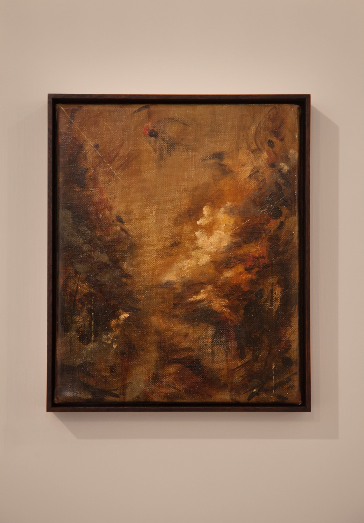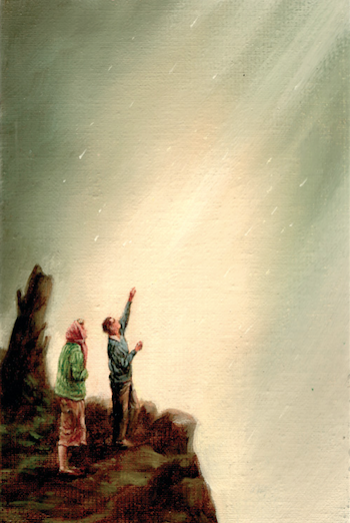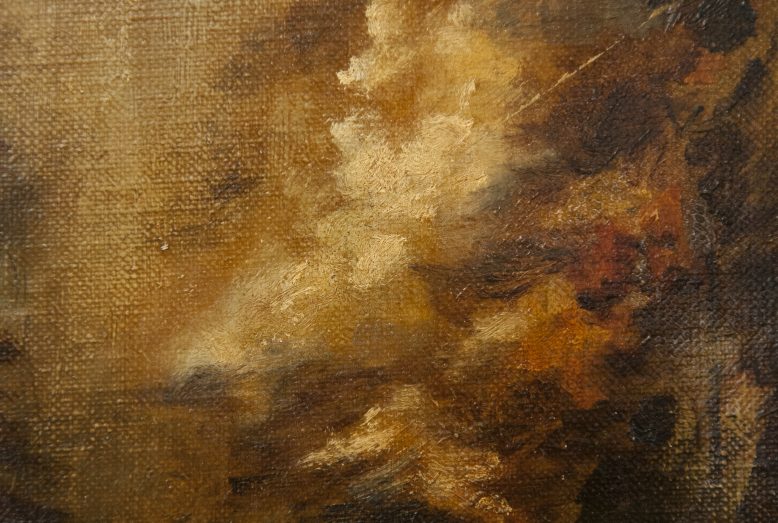A Painting Cycle | Conversation with Christopher Orr
 Christopher Orr, Mysterium Magnum, 2008. Installation view, Nomas Foundation, Rome. Ph. Giuliano Pastori
Christopher Orr, Mysterium Magnum, 2008. Installation view, Nomas Foundation, Rome. Ph. Giuliano Pastori
 Christopher Orr, All We Need is the Air That We Breathe, 2004.
Christopher Orr, All We Need is the Air That We Breathe, 2004.
 Christopher Orr, Silver Branch, 2009.
Christopher Orr, Silver Branch, 2009.
 Christopher Orr, Mysterium Magnum (detail), 2008. Installation view, Nomas Foundation, Rome. Ph. Giuliano Pastori
Christopher Orr, Mysterium Magnum (detail), 2008. Installation view, Nomas Foundation, Rome. Ph. Giuliano Pastori
April 5th, 2012
Christopher Orr’s universe suspended between reality and illusion, is a romantic and oneiric one. Populated by a wide range of sources and influences, Orr’s works are hypnothical juxtapositions of times and spaces, which develop in unusual yet utterly attractive narratives. Opening up to unknown landscapes and mysterious portraits, the artist’s small canvases engage with the history of painting, while questioning the concept of representation. Orr’s practice reveals emotional worlds, discloses the imagined, and suggests a space beyond the experienced.Â
Nomas Foundation: If you were to describe your work through some key words which would you indicate?
Christopher Orr: Small intimate paintings, sense of great spaces, infinite voids, shifts in scale, people engaged in activities unknown to the viewer, the sublime and Romanticism, fragments, montage.
NF: When did your interest in painting start, and how did you become part of your vocabulary?
CO: Although I'd always been interested in drawing and painting as a child, I think when I was older and interested in music, the designs and graphics of punk records were something that grabbed my imagination. In particular the work of Jamie Reid for the Sex Pistols was a style I would try and mimic, making my own posters through cut and paste, photocopying techniques. Years later at college when I started making figurative paintings, I employed much the same techniques of collage, cut and paste to create the paintings.
NF: Which peculiarities of your research are being pointed out within the works presented on the occasion of A painting cycle?
CO: The images are brought together for the paintings are drawn from a large range of source material. The sources may be old science magazines and books, National Geographic, children's encyclopedias and occasionally Old Master paintings.
NF: What originally attracted us to your work was the lexicon through which you are addressing the language and history, of painting.. Your works reconnect with a familiar history, a leap in a past that is probably still etched in our approach to visual art, and a subversion of the medium at once. Can you tell us how you approach, and elaborate a certain history of painting?
CO:
NF: Your works play with the dialectic between the intimate scale of the works and the infinite spaces and potential worlds they reveal. Our reading of your oeuvre brought us to address it in its most visual, hypnotic, emotional nuances: the transposition and transformation of the real and of the imagined. What kind of landscapes are you disclosing?
CO: The landscapes in the paintings are always imagined as opposed to the figures, animals and objects in the works that are from photographic sources. The landscapes often can act as a foil to the inwardly looking blandly dressed figures who often seem to have little engagement with their environment and are preoccupied with other matters. In some of the paintings I like to imagine what the figures are engaged in, and that the landscape itself becomes a manifestation of their thoughts so the spaces they inhabit become quite supernatural.